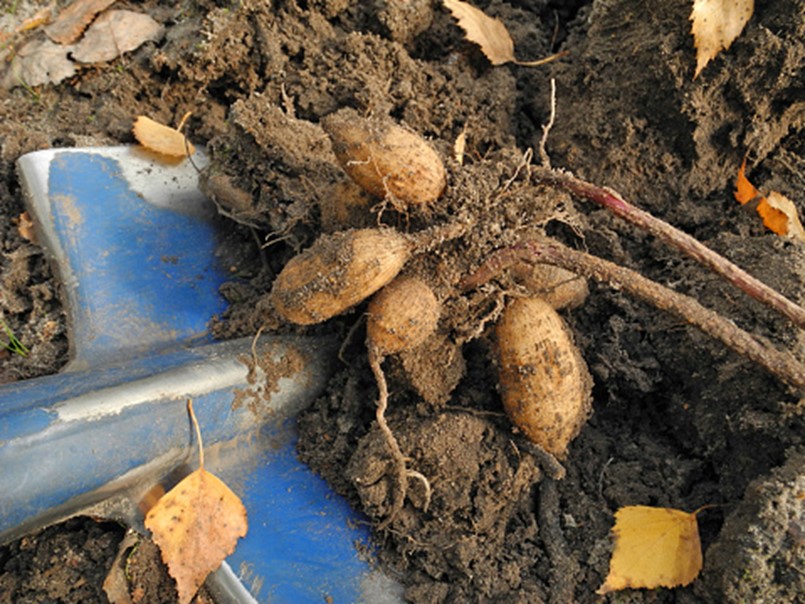Digging and storing tender bulbs
Plants with tender bulbs, corms, tubers and roots are a great addition to any garden, but in northern climates, they must be dug up and stored for the winter.

Michigan State University Extension recognizes that plants with tender bulbs, corms, tubers, and tuberous roots are a great addition to any garden. Michigan gardeners love dahlias, gladiolus, caladiums, tuberous begonias, cannas, elephant ears and other tender bulbs, but in northern climates they must be dug up and stored for the winter.
Throughout this article, all tender bulbs, corms, tubers, and tuberous roots will be referred to as “bulbs.”

The bulb is essentially the storage structure of the plant. There are many books and websites devoted to the care of specific tender bulbs. This article will address some of the general practices while digging and storing tender bulbs.
Most bulbs should be dug up after the first killing frost. The best indicator that it’s the right time to dig and store tender bulbs is when the leaves turn brown and start to dry up. It is recommended that you cut the tops off the plants about 6 inches from the ground. This way you will know where the bulbs are and have a “handle” to help remove the bulb from the soil. A digging fork or spade can be used to loosen the soil around the bulbs, but it is important not to cut the bulbs. Diseases can spread rapidly when bulbs are cut or “skinned,” and many diseases cause rotting during the storage period. Be sure to loosen the soil from all sides of the bulb and lift gently from the ground.
Some plants, like cannas and dahlias like to be washed before storage. The best way to do this is to use a hose or gently dip bulbs in a large tub. After rinsing of excess soil, these bulbs like to be cured for about three days. Lay the bulbs out to dry in a cool place on a raised screen to encourage airflow, if you do not have a large screen lay them on paper on a garage or basement floor and turn often. Do not cure in the sunlight or outdoors, where there is danger of frost.
Other bulbs like gladiolus and oxalis need long term curing. These bulbs need to be cured up to three weeks. The ideal conditions for curing tender bulbs are between 60 to 70 degrees Fahrenheit, dry and well ventilated. Cool basements work well for curing and storing tender bulbs.
Once cured, it is time for storage. It is important to label stored bulbs. You can even write on the larger bulbs with a felt tipped marker. Check the bulbs every two to three weeks, removing any damaged or rotting bulbs.
The following articles may be helpful with the proper care and storage for specific bulbs:
- “Storing and saving tender bulbs during winter,” Michigan State University Extension,
- “Fall care for tender and hardy bulbs,” University of Minnesota Extension
- “Storing Tender "Bulbs" for Winter,” Wisconsin Horticulture Division of Extension
The other great benefit to digging your tender bulbs is to trade or share them with gardening friends. It is a great way to cultivate friendships and colorful gardens.



 Print
Print Email
Email





